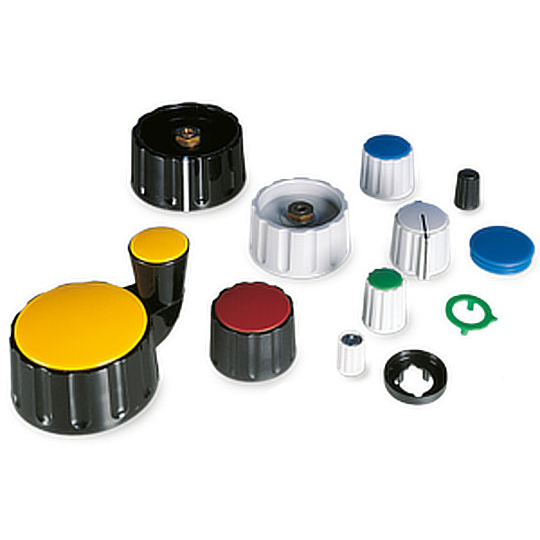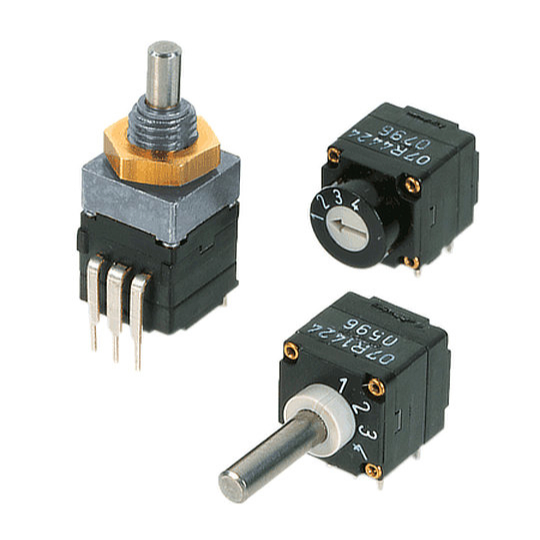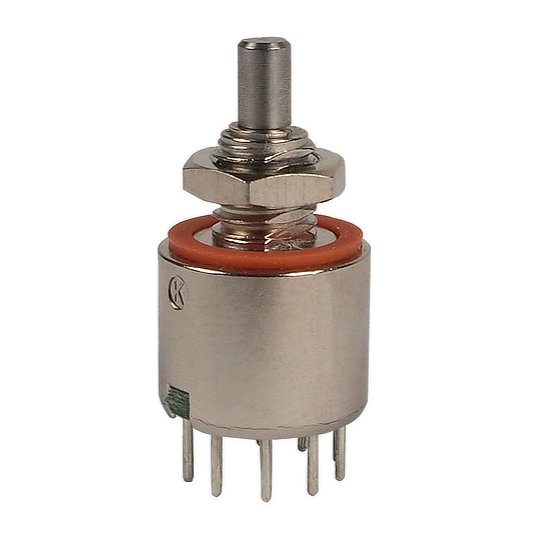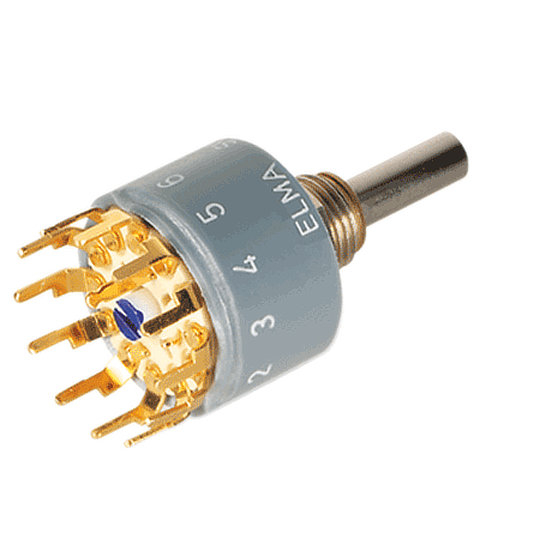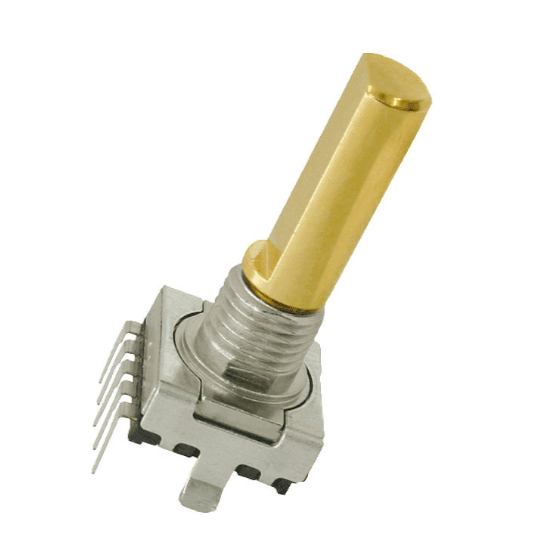Classic Rotary Knob Series
The Classic Knob selection from Elma are a range of plastic control knobs which match the Elma product range as well as many other brands of rotary switches. All these knobs are designed for precision control with a high-quality build and secured by the proven collet tightening method.
The Classic Knob selection range from knob sizes of 9mm up to 45mm in diameter with the 7mm to 28mm variations being available with our without wings. All versions are available with or without a line and the knobs will fit shaft diameters from 2mm to 1/4”. There is also the option of inserting one knob into the other concentric style for use when dual knobs are required.
Available with a black or grey body in a matt or glass the range also contains a large variety of cap colours. This allows designers the ability to aesthetically match the Elma range to their products in many different ways.
| Knob Diameter (mm) | 9, 10, 14.5, 21, 28, 36, 45 |
| Collet/Shaft Size | 2mm, 3mm, 4mm, 5mm, 6mm, 1/8", 1/4" |
| Shell Material | Polyamide |
| Fixing Material | Brass |
FAQs
A rotary switch is a style of switch which uses the rotation of an actuator to change its state. These are generally used when more than 3 different positions are required which is the maximum a rocker switch can accommodate. This makes them ideal for use as selector switches on products like multifrequency radios and sound/audio control units.
Rotary switches are ideal for use as selector switches as they can have many more positions than other types of switches. This makes them ideal for applications such as telecommunication equipment, networking systems, audio/video equipment as well as military equipment such as targeting devices and night vision equipment.
A rotary switch works by allowing the actuator to spin around a central point, this actuator has an arm inside the housing which is where the positive part of the circuit is attached. The switch housing also has a number of negative pins protruding from its base which connect to different circuits within the equipment. As the actuator is rotated the positive arm inside is rotated correspondingly and makes a connection with a negative pin completing that circuit. If the actuator continues to rotate this negative pin is disconnected and the next negative pin along is connected completing a different circuit. In this way, a single switch is able to connect multiple different circuits one at a time.
A rotary switch is installed by connecting the central pin to a common positive wire or circuit within a PCB. The negative pins around the outside are then connected in relation to the circuit design which will operate the different circuits, these are usually numbered from 1 upwards.

